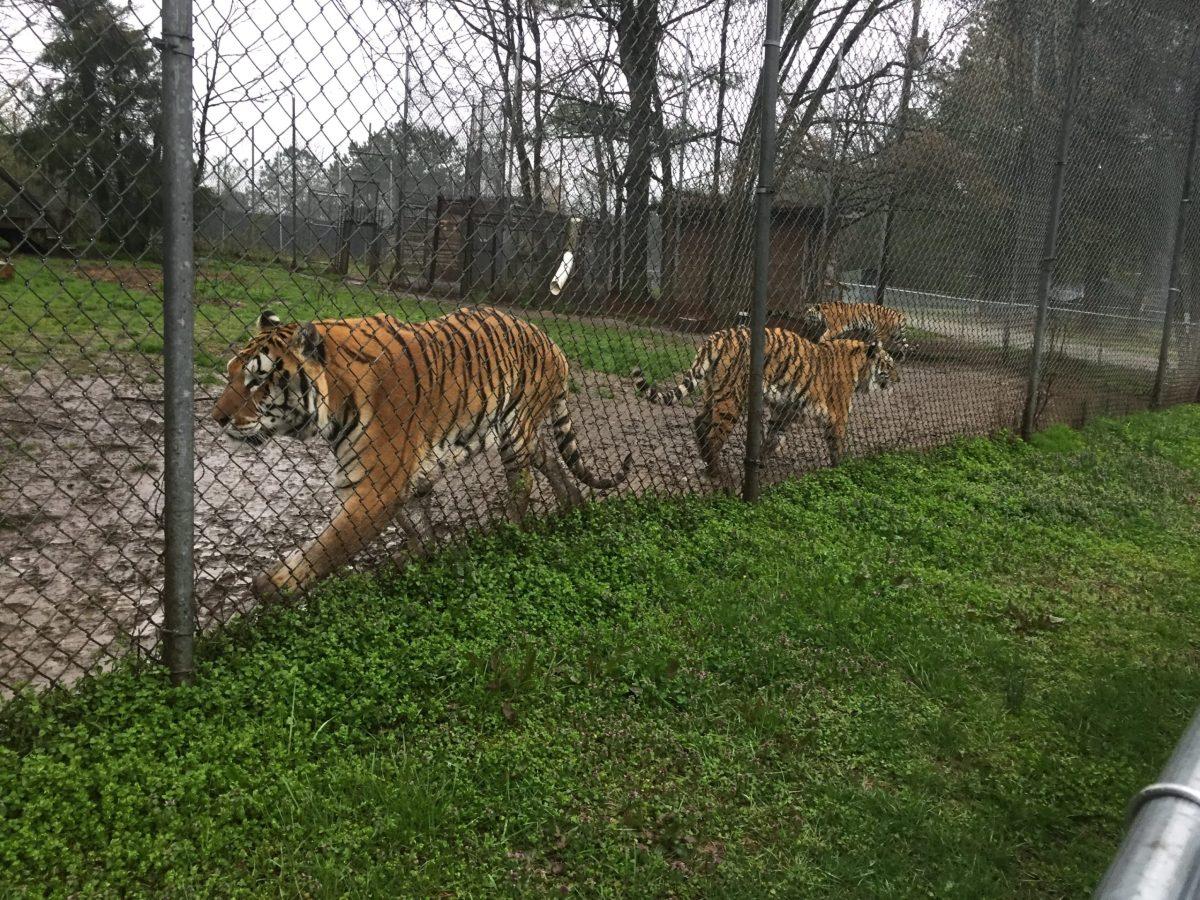In high school, I wasn’t the most socially active person. The only group I was consistently active in was Yearbook.
So when I got to Rowan, I decided to take every opportunity I could to bolster my college career. This eventually led to my participation in and attendance of various staple Rowan events, club memberships and e-board positions, and a never-ending list of classes within and outside of my majors and minor that I wanted to take over the past almost four years.
Almost immediately after setting foot on the Glassboro campus, I heard of Alternate Spring Break (ASB) opportunities through the Office of Volunteerism. This sparked my interest, as there was one that fit my interests perfectly: a trip to the Carolina Tiger Rescue in North Carolina. I saw this as a great opportunity to make new friends, travel, see animals, do volunteer work and avoid the stereotypical college spring break trip obligations.
The trip certainly met those expectations, and I met one of my closest friends at Rowan on that trip and even went on another ASB trip with her the following year.
One thing I hadn’t expected at the tiger rescue, however, was to learn about palm oil. Up until that point, I wasn’t very “in-the-know” about much, so even the existence of palm oil was new to me, let alone its negative impacts to which I would shortly be introduced.
Palm oil comes from palm trees, which thrive in tropical areas. It’s one of the most popular oils globally due to its cheap production costs, and is found in most products we can find on the shelves of the local supermarket, including cosmetics, food and detergents. Palm oil is also found in biofuel, to a lesser extent. It’s even commonly used in cooking in certain areas of the world, as well as for other purposes.
From this cursory glance, the detriments of palm oil aren’t obvious, but taking even a slightly deeper look reveals many flaws in the production of palm oil.
First, cheap production has led to increased demand for palm oil; between 1980 and 2014, palm oil production has increased from 4.5 million tons to 70 million tons. It’s expected to increase moving forward, with the demand projected to increase 1.7% yearly until 2050.
Increased demand and increased production lead to a need for more land dedicated to the crop’s cultivation. Since palm trees need tropical climates to thrive, much of the land taken for this industry is in South America, Africa and southeastern parts of Asia.
This land is cleared to make way for palm trees, destroying the natural habitats of hundreds of species, including — you guessed it — tigers. Sumatra, an island of Indonesia, is one of the major locations globally of palm oil production and is home to the critically endangered Sumatran tiger. This habitat destruction deprives native animals of food sources and other resources they need to survive. Since the habitat is diminished — and in some cases completely destroyed — and unable to sustain native wildlife, habitat destruction and deforestation often lead to species extinction and lowered biodiversity.
Biodiversity is extremely important to the balance of an ecosystem, as seen with the reintroduction of wolves to Yellowstone National Park in 1995. The presence of the wolves has helped reinvigorate the lives of the species living in that area, particularly the elk population. It’s not a far stretch to conclude that without tigers and other species forced into extinction by deforestation for palm oil, ecosystems around the world will suffer and be thrown into an imbalance that can’t be easily fixed, if at all.

Though habitat loss is probably the threat of deforestation that most people think of initially, global warming is yet another. Deforestation accounts for 10% of the world’s global warming emissions through the mass release of carbon dioxide, the leading cause of global warming. Palm oil deforestation in Indonesia alone “accounted for an estimated 2 to 9 percent of all tropical land use emissions from 2000 to 2010,” according to the Union of Concerned Scientists.
So what can we do about the palm oil predicament? Like most issues, there isn’t an easy answer. We can’t outlaw the use of palm oil; it’s a vital part of the diets of people living in Asia and Africa, with it being the most dominant oil used in their foods. The palm oil industry also helps provide jobs to Indonesians and Malaysians (though they are often exploited), as well as influences the creation and maintenance of infrastructure like hospitals, schools and roads.
The most realistic option at the moment is to create a more sustainable way to harvest palm oil. Palm trees become viable sources of oil four to six years after they have been planted. Their life expectancy is about 30 years and they grow to about 40 feet, at which point they become “too hard to harvest.” The trees are then killed and removed to make room for new palm trees, which then won’t produce any oil for another four to six years.
The Roundtable on Sustainable Palm Oil (RSPO), a not-for-profit group comprising “stakeholders from the 7 sectors of the palm oil industry,” was founded in 2004 to push for more sustainable palm oil production, though a study determined that the group hasn’t very successfully accomplished its conservation goals.
So if this has been ineffective, what else can we do? I suggest that we continue to push for sustainable production of palm oil. As consumers, we have the power to hold the companies using palm oil accountable and petition them, as many have done.
We can also be aware of what products have palm oil in them. There are several apps that you can use to easily determine if the product in question contains palm oil, one such app being PalmSmart. You can also look for certification of sustainable palm oil on an item’s packaging. Some certifications include the RSPO and the International Palm Oil Free Certification Trademark.
Not least of all, it’s important to educate ourselves on the issues at hand. Learning about the impacts of the palm oil industry and sharing that knowledge with people helps create a better informed public that can help attain a fully sustainable palm oil industry in the future.
As I said at the beginning of this article, I didn’t know about palm oil at all three years ago. The only way I’m able to participate in the movement toward more sustainable palm oil production is because someone told me about it. Now that you know about it too, it’s your turn share this knowledge.
For comments/questions about this story, email [email protected] or tweet @TheWhitOnline.

























































































































































!["Working with [Dr. Lynch] is always a learning experience for me. She is a treasure,” said Thomas. - Staff Writer / Kacie Scibilia](https://thewhitonline.com/wp-content/uploads/2025/04/choir-1-1200x694.jpg)











































michelle desilets • Oct 22, 2020 at 7:09 am
Great article! We at Orangutan Land Trust encourage consumers to demand sustainable palm oil.